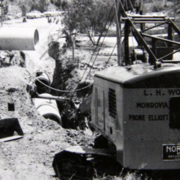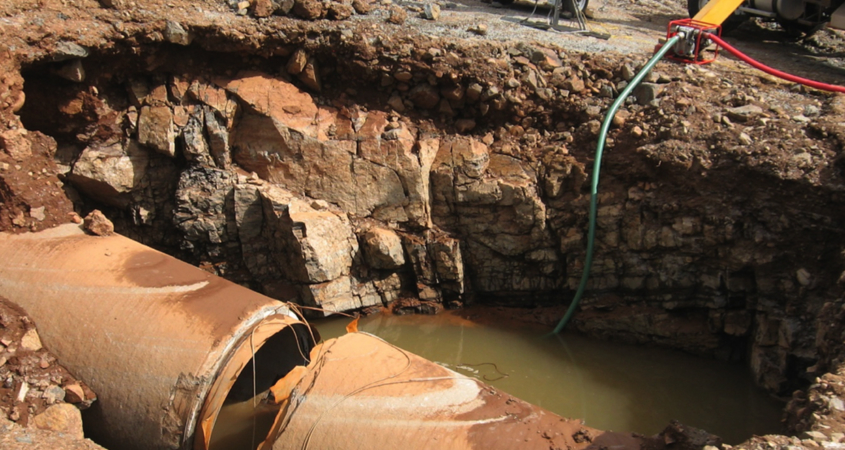After 60 years of work upgrading the San Diego regional aqueduct system, Vista-based L.H. Woods & Sons, Inc. was honored by the San Diego County Water Authority’s Board of Directors upon completion of the company’s final project under local ownership for the Water Authority.
The Board formally marked the successful conclusion of the $28.6 million Lake Murray to Sweetwater Reservoir pipeline relining project at its September 27 meeting. L.H. Woods reinforced 4.3 miles of large-diameter pipeline to extend its service life by decades. At the meeting, the Board adopted a resolution honoring Woods for decades of unequaled service to the region’s 3.3 million residents and its $220 billion economy.
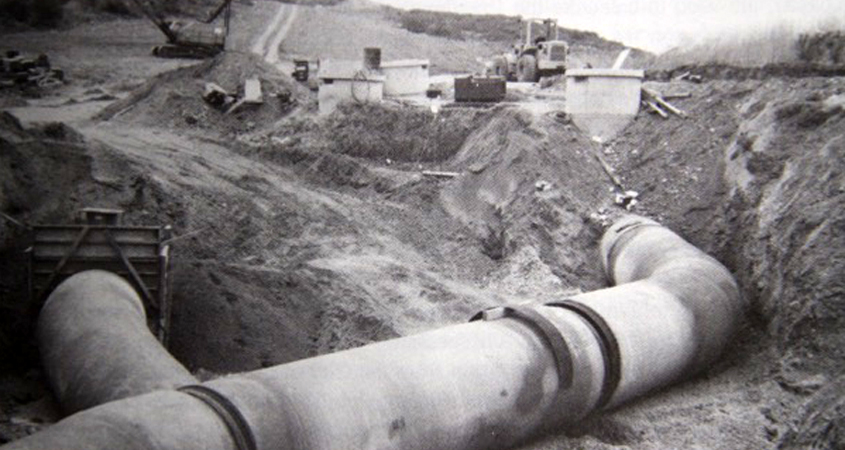
L.H. Woods works on the 2nd Aqueduct in 1972. Photo: Courtesy L.H. Woods
Since Woods’ first Water Authority project in 1959 to excavate the Second Aqueduct, three generations of Woods have worked on approximately 40 projects for the agency. Work includes construction of several pipeline segments in the 1960s, 70s and 80s; construction of the North County Distribution Pipeline in the 1990s; emergency pipeline repairs near the San Diego River in 2008; and several pipeline relining projects in recent decades.
“Nothing is more important to our region’s economy and quality of life than ensuring our pipelines continue to deliver water without interruption – and no company has played a bigger role in that effort than Woods,” said Jim Madaffer, chair of the Water Authority’s Board. “Woods brings to each project an innovative spirit and an unwavering commitment to excellence that benefits every person in our region every single day.”
L.H. Woods played key role in Water Authority relining project
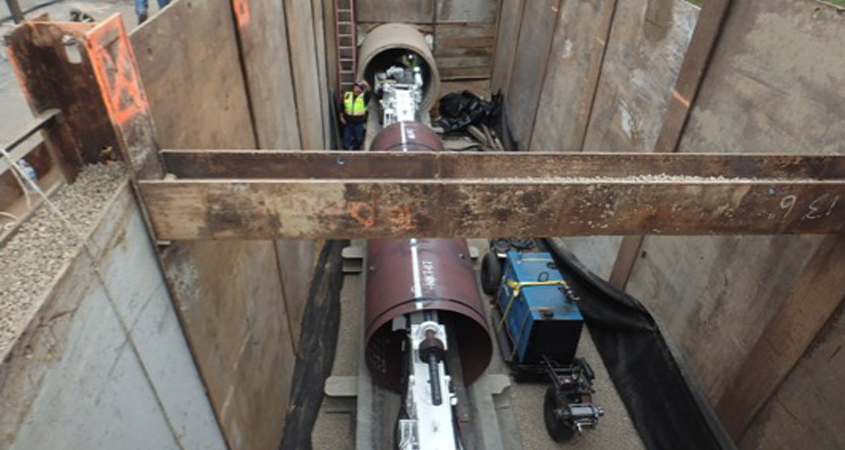
L.H. Woods working on its final project within the Water Authority’s relining program in 2017. Photo: Courtesy L.H. Woods
In September 2017, Woods started construction on the La Mesa to Sweetwater relining project. Crews conducted most of the work underground and used 17 portals to access the 66-inch and 69-inch diameter prestressed concrete cylinder pipe. Woods deployed specialized installation equipment built specifically for the Water Authority’s aqueduct system to install steel pipeline liners.
Much of the construction was in public rights-of-way in La Mesa on Baltimore Drive (south of the Laport Street-El Paso Street intersection), Nebo Drive (to University Avenue), and Spring Street. Work did not close any streets, through it temporarily reduced lanes for traffic. All construction equipment has been removed, and all streets have been restored.
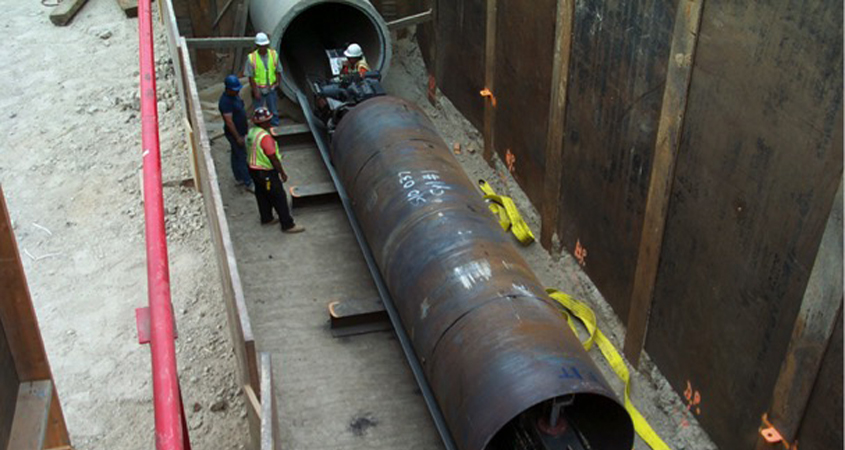
L.H. Woods working on one of many projects within the Water Authority’s relining program in 2000. Photo: Courtesy L.H. Woods
As a certified small business, Woods participated in the Water Authority’s Small Contractor Outreach and Opportunities Program, which is designed to maximize participation by small businesses in the agency’s procurements. In June, the company was purchased by J.F. Shea Co., Inc., one of the largest and oldest privately held construction companies in the nation. Shea’s storied history includes work on the Golden Gate Bridge, Hoover Dam and the pipeline connecting the Claude “Bud” Lewis Carlsbad Desalination Plant to the Water Authority’s regional water distribution system.
With the completion of the La Mesa to Sweetwater relining project, the Water Authority has relined 45 of the 82 miles of pre-stressed concrete cylinder pipe in its system.
An L.H. Woods crew works on emergency repairs for the Water Authority in 2008. Photo: Courtesy L.H. Woods
Pre-stressed concrete cylinder pipes were commonly installed between the early 1960s and the late 1980s in water distribution systems throughout the world. This combination of concrete and steel initially appeared to provide unparalleled inner pipe strength and be highly resistant to corrosion. However, pre-stressed concrete cylinder pipes have not been as reliable as predicted, and the Water Authority is proactively relining sections of that pipe to extend their service life by at least 75 years.
The Water Authority’s relining program is an important part of its Asset Management Program, which helps avoid pipeline failures by identifying potential risks before they cause problems. To date, the Asset Management Program has saved water ratepayers more than $200 million by prioritizing repairs, avoiding unnecessary work and maximizing the service life of the region’s 310 miles of large-diameter pipelines.

